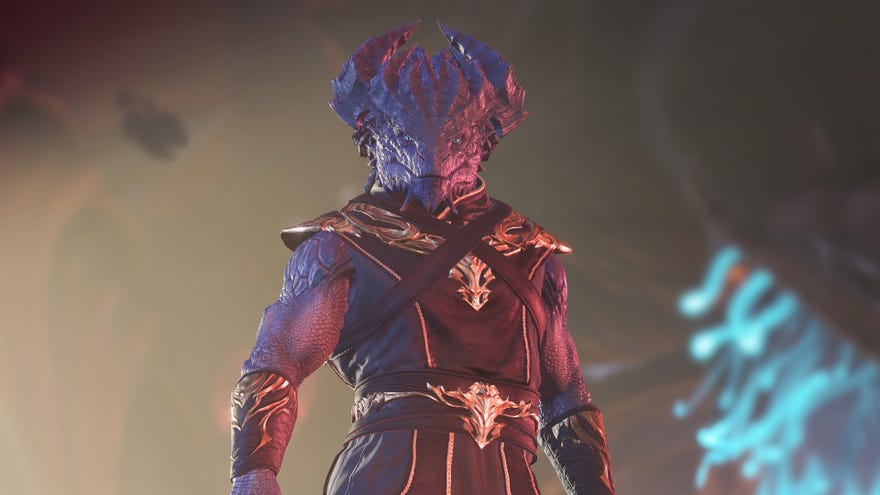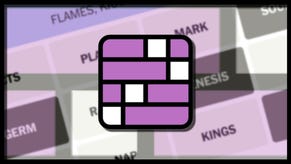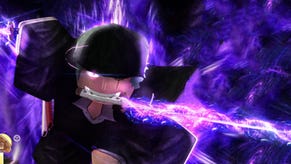Baldur's Gate 3 classes
Learn more about every class in Baldur's Gate 3
Want to learn more about all Baldur's Gate 3 classes? There are 12 classes in Baldur's Gate 3, and learning the differences between them all can prove overwhelming for those new to the world of Dungeons & Dragons. Fortunately, that's where we come in!
In this guide, we break down all 12 Baldur's Gate 3 classes, covering the proficiencies, primary abilities, HP total, subclasses, and class features of each so that you can get a clear picture of how each class plays while you fight your way across Faerun.
Baldur's Gate 3 classes
Below, you'll find a list of all 12 Baldur's Gate 3 classes:
- Barbarian: A primarily melee class that charges into combat and Rages to boost damage and survivability.
- Bard: A musical spellcaster that can trick, charm, and confuse enemies while healing allies.
- Cleric: A holy warrior devoted to a particular deity, capable of using strong magic to harm enemies and heal allies.
- Druid: A nature-based spellcaster that can use Wild Shape to transform into a range of creatures.
- Fighter: A typical soldier, the Fighter is prepared to use any ranged or melee weapons necessary to overcome whatever stands in their path.
- Monk: An unarmed warrior that can empower their punches with Ki Points to remain fast and ferocious in combat.
- Paladin: A warrior sworn to follow an Oath, the Paladin will help keep allies on their feet while tearing through enemies.
- Ranger: A formidable tracker, the Ranger hunts their prey before striking from afar with precision.
- Rogue: A sneaky trickster who is at their best when stealing and striking from the shadows.
- Sorcerer: A spellcaster with inherent powers, the Sorcerer is born with arcana at their fingertips.
- Warlock: A spellcaster who makes a pact with a mysterious patron and is granted powerful magic in exchange for their servitude.
- Wizard: An arcane master who has learned their spells through rigorous research and reading.
Barbarian

- Proficiencies: Simple Weapons, Martial Weapons, Light Armour, Medium Armour, Shields
- Primary Ability: Strength
- Level 1 HP: 12 + Constitution Modifier
- Level 2+ HP: 7 + Constitution Modifier
- Subclasses: Berserker, Wildheart, Wild Magic
The Barbarian is a melee powerhouse, and one of the best beginner classes. Unlike other classes, the upgrades you receive upon levelling up as a Barbarian are some of the simpler powers in the Dungeons & Dragons 5e ruleset.
For example, the Barbarian gets Extra Attack at level 5 and Fast Movement at level 7, both of which do exactly what they respectively say: grant you a second attack and give you 10ft of extra movement per turn. These are far easier to understand than the massive spell lists of a Bard or a Wizard, for example.
The Barbarian's key ability is Rage, which you can activate during combat to gain advantage on Strength checks and Strength saving throws, resistance to bludgeoning, piercing, and slashing damage, and extra damage when you make an attack. Again, these are simple buffs to your survivability and your damage, but they can easily turn an impossible encounter into a piece of cake.
For more on kitting out your Barbarian and Raging your way through the battlefield, see our Baldur's Gate 3 best Barbarian build guide.
| Level | Class Features | Prof. Bonus | Rages | Rage DMG |
|---|---|---|---|---|
| 1 | Rage, Unarmored Defense | +2 | 2 | +2 |
| 2 | Reckless Attack, Danger Sense | +2 | 2 | +2 |
| 3 | Subclass choice (Berserker, Wildheart, or Wild Magic), Subclass Feature | +2 | 3 | +2 |
| 4 | Ability Score Improvement or Feat | +2 | 3 | +2 |
| 5 | Extra Attack, Fast Movement | +3 | 3 | +2 |
| 6 | Subclass Feature | +3 | 4 | +2 |
| 7 | Feral Instinct | +3 | 4 | +2 |
| 8 | Ability Score Improvement or Feat | +3 | 4 | +2 |
| 9 | Brutal Critical | +4 | 4 | +3 |
| 10 | Subclass Feature | +4 | 4 | +3 |
| 11 | Relentless Rage | +4 | 4 | +3 |
| 12 | Ability Score Improvement or Feat | +4 | 5 | +3 |
Bard
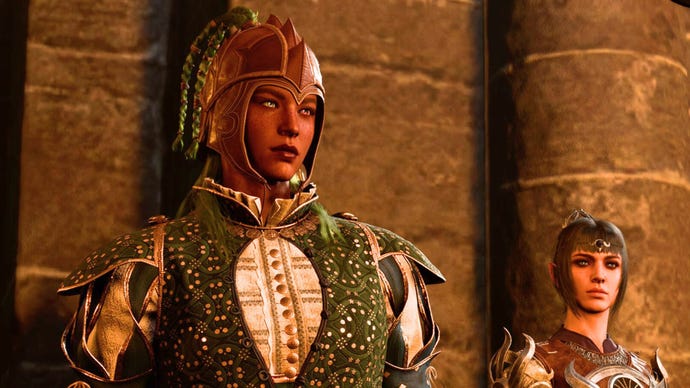
- Proficiencies: Simple Weapons, Hand Crossbows, Longswords, Rapiers, Shortswords, Light Armour
- Primary Ability: Charisma
- Level 1 HP: 8 + Constitution Modifier
- Level 2+ HP: 5 + Constitution Modifier
- Subclasses: College of Lore, College of Valor, College of Swords
The Bard is one of the more versatile classes, and it typically fills a supportive role in the party. Bards gain access to plenty of spells that can deal damage, such as Thunderwave and Cloud of Daggers, but they have far more spells that will buff or heal allies, or inflict enemies with negative status effects.
The Bard also gets access to Bardic Inspiration, one of the key ways to buff your party. When you use Bardic Inspiration, you give an ally 1d6 that they can add to an ability check, attack roll, or saving throw. This increases to 1d8 at level 5 and 1d10 at level 10.
If subduing enemies and buffing allies through song-fueled magic sounds like your jam, head on over to our Baldur's Gate 3 best Bard build guide.
| Level | Class Features | Prof. Bonus |
Cantrips | Spells | Slots |
|---|---|---|---|---|---|
| 1 | Bardic Inspiration, Spellcasting (Cantrips and Level 1 Spells) | +2 | 2 | 4 | 2 | 0 | 0 | 0 | 0 | 0 |
| 2 | Jack of all Trades, Song of Rest | +2 | 2 | 5 | 3 | 0 | 0 | 0 | 0 | 0 |
| 3 | Subclass choice (College of Lore, College of Valour, or College of Swords), Subclass Feature, Expertise, Level 2 Spells | +2 | 2 | 6 | 4 | 2 | 0 | 0 | 0 | 0 |
| 4 | Ability Score Improvement or Feat | +2 | 3 | 7 | 4 | 3 | 0 | 0 | 0 | 0 |
| 5 | Improved Bardic Inspiration, Font of Inspiration, Level 3 Spells | +3 | 3 | 8 | 4 | 3 | 2 | 0 | 0 | 0 |
| 6 | Countercharm, Subclass Feature | +3 | 3 | 9 | 4 | 3 | 3 | 0 | 0 | 0 |
| 7 | Level 4 Spells | +3 | 3 | 10 | 4 | 3 | 3 | 1 | 0 | 0 |
| 8 | Ability Score Improvement or Feat | +3 | 3 | 11 | 4 | 3 | 3 | 2 | 0 | 0 |
| 9 | Improved Song of Rest, Level 5 Spells | +4 | 3 | 12 | 4 | 3 | 3 | 3 | 1 | 0 |
| 10 | Improved Bardic Inspiration, Expertise, Magical Secrets | +4 | 4 | 14 | 4 | 3 | 3 | 3 | 2 | 0 |
| 11 | Level 6 Spells | +4 | 4 | 15 | 4 | 3 | 3 | 3 | 2 | 1 |
| 12 | Ability Score Improvement or Feat | +4 | 4 | 15 | 4 | 3 | 3 | 3 | 2 | 1 |
Cleric
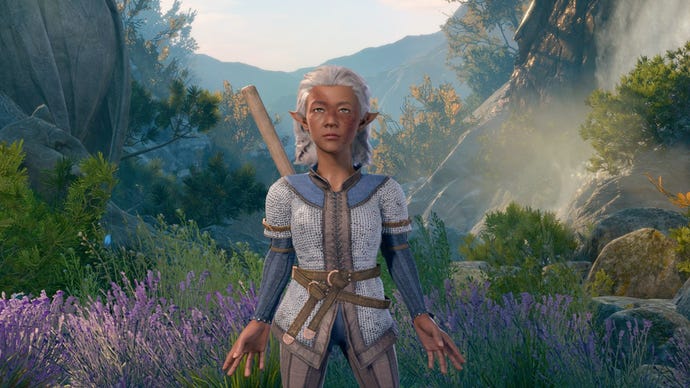
- Proficiencies: Simple Weapons, Morningstars, Light Armour, Medium Armour, Shields
- Primary Ability: Wisdom
- Level 1 HP: 8 + Constitution Modifier
- Level 2+ HP: 5 + Constitution Modifier
- Subclasses: Life Domain, Light Domain, Trickery Domain, Knowledge Domain, Nature Domain, Tempest Domain, War Domain
The Cleric is a holy warrior who can use sacred magic to heal allies and devastate opponents. Thanks to their divine powers, Clerics possess unique abilities to destroy skeletons, zombies, and all other manner of undead foe.
The Cleric gets access to Channel Divinity, a unique mechanic that you can use to Turn Undead. This forces nearby undead creatures to move as far away from you as possible, and only allows them to use the Dash or Dodge actions.
Depending on your subclass, you'll also get more Channel Divinity effects. Life Domain Clerics, for example, can Channel Divinity to heal allies, while Trickery Domain Clerics can use this power to Invoke Duplicity. You'll get more Channel Divinity powers as you level up, and a second charge at level 6.
For more info on pledging allegiance to the divine, take a peek at our Baldur's Gate 3 best Cleric build guide.
| Level | Class Features | Prof. Bonus |
Cantrips | Slots |
|---|---|---|---|---|
| 1 | Subclass choice, Spellcasting (Cantrips and Level 1 Spells) | +2 | 3 | 2 | 0 | 0 | 0 | 0 | 0 |
| 2 | Channel Divinity (1/rest), Subclass feature | +2 | 3 | 3 | 0 | 0 | 0 | 0 | 0 |
| 3 | Level 2 Spells | +2 | 3 | 4 | 2 | 0 | 0 | 0 | 0 |
| 4 | Ability Score Improvement or Feat | +2 | 4 | 4 | 3 | 0 | 0 | 0 | 0 |
| 5 | Destroy Undead, Level 3 Spells | +3 | 4 | 4 | 3 | 2 | 0 | 0 | 0 |
| 6 | Channel Divinity (2/rest), Subclass feature | +3 | 4 | 4 | 3 | 3 | 0 | 0 | 0 |
| 7 | Level 4 Spells | +3 | 4 | 4 | 3 | 3 | 1 | 0 | 0 |
| 8 | Ability Score Improvement or Feat, Improved Destroy Undead, Subclass feature | +3 | 4 | 4 | 3 | 3 | 2 | 0 | 0 |
| 9 | Level 5 Spells | +4 | 4 | 4 | 3 | 3 | 3 | 1 | 0 |
| 10 | Divine Intervention | +4 | 5 | 4 | 3 | 3 | 3 | 2 | 0 |
| 11 | Improved Destroy Undead, Level 6 Spells | +4 | 5 | 4 | 3 | 3 | 3 | 2 | 1 |
| 12 | Ability Score Improvement or Feat | +4 | 5 | 4 | 3 | 3 | 3 | 2 | 1 |
Druid

- Proficiencies: Clubs, Daggers, Javelins, Maces, Quarterstaffs, Scimitars, Sickles, Spears, Light Armour, Medium Armour, Shields
- Primary Ability: Wisdom
- Level 1 HP: 8 + Constitution Modifier
- Level 2+ HP: 5 + Constitution Modifier
- Subclasses: Circle of the Moon, Circle of the Land, Circle of Spores
The Druid is a spellcaster who lives a life entwined with nature and uses nature-powered magic to heal friends and harm foes. Like the Bard, this is one of the most versatile Baldur's Gate 3 classes, well-suited to dealing damage or supporting the party depending on what's needed.
Of course, it's Wild Shape that sets the Druid apart. You can use this to become a Cat, Badger, Bear, Spider, Dire Raven, and even an Owlbear depending on your level. This is available to all Druids, but those who take the Circle of the Moon subclass can incorporate Wild Shape into their playstyle even further by making it a bonus action (rather than a full action) and by unlocking new animal transformations.
That's just the tip of the moss-encrusted boulder when it comes to the Druid. For more thoughts on running through the wilds in the Wild Shape of your choice, see our Baldur's Gate 3 best Druid build guide.
| Level | Class Features | Prof. Bonus |
Cantrips | Slots |
|---|---|---|---|---|
| 1 | Druidic language, Spellcasting (Cantrips and Level 1 Spells) | +2 | 2 | 2 | 0 | 0 | 0 | 0 | 0 |
| 2 | Wild Shape, Subclass choice | +2 | 2 | 3 | 0 | 0 | 0 | 0 | 0 |
| 3 | Level 2 spells | +2 | 2 | 4 | 2 | 0 | 0 | 0 | 0 |
| 4 | Ability Score Improvement or Feat, Improved Wild Shape | +2 | 3 | 4 | 3 | 0 | 0 | 0 | 0 |
| 5 | Level 3 Spells | +3 | 3 | 4 | 3 | 2 | 0 | 0 | 0 |
| 6 | Subclass Feature | +3 | 3 | 4 | 3 | 3 | 0 | 0 | 0 |
| 7 | Level 4 Spells | +3 | 3 | 4 | 3 | 3 | 1 | 0 | 0 |
| 8 | Ability Score Improvement or Feat, Improved Wild Shape | +3 | 3 | 4 | 3 | 3 | 2 | 0 | 0 |
| 9 | Level 5 Spells | +4 | 3 | 4 | 3 | 3 | 3 | 1 | 0 |
| 10 | Subclass Feature | +4 | 4 | 4 | 3 | 3 | 3 | 2 | 0 |
| 11 | Level 6 Spells | +4 | 4 | 4 | 3 | 3 | 3 | 2 | 1 |
| 12 | Ability Score Improvement or Feat | +4 | 4 | 4 | 3 | 3 | 3 | 2 | 1 |
Fighter
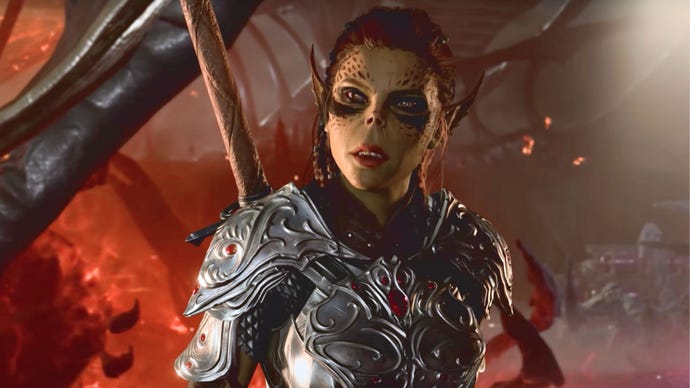
- Proficiencies: Simple Weapons, Martial Weapons, Light Armour, Medium Armour, Heavy Armour, Shields
- Primary Ability: Strength
- Level 1 HP: 10 + Constitution Modifier
- Level 2+ HP: 6 + Constitution Modifier
- Subclasses: Battle Master, Eldritch Knight, Champion
The Fighter is the combat jack-of-all-trades in Dungeons & Dragons, with melee and ranged prowess that allows you to easily adapt to any battle scenario. Like the Barbarian, it's an incredibly beginner-friendly class thanks to the simplicity of many of its upgrades.
These include Action Surge, which grants you an extra action on your turn, and Extra Attack. If you want more versatility in your Fighter build, you can also go with the Eldritch Knight subclass, which grants you a range of magical options. The Battle Master subclass is also a great choice, granting you Manoeuvres that you can use in combat to disarm, distract, parry, and more.
Fighters also gain access to a Fighting Style, which lets you hone in on a specific type of damage. These include: Archery, Defense, Dueling, Great Weapon Fighting, Protection, and Two-Weapon Fighting. These offer small bonuses to a specific stat or weapon type that you might want to focus on. All Fighters get to choose one Fighting Style, and Champions get to choose a second at level 10.
Our Baldur's Gate 3 best Fighter build guide has more information on making the most of your fighting style and choosing the best feats to always topple your enemies.
| Level | Class Features | Prof. Bonus |
|---|---|---|
| 1 | Second Wind, Fighting Style Passive | +2 |
| 2 | Action Surge | +2 |
| 3 | Subclass choice | +2 |
| 4 | Ability Score Improvement or Feat | +2 |
| 5 | Extra Attack | +3 |
| 6 | Ability Score Improvement or Feat | +3 |
| 7 | Subclass Feature | +3 |
| 8 | Ability Score Improvement or Feat | +3 |
| 9 | Indomitable | +4 |
| 10 | Subclass Feature | +4 |
| 11 | Improved Extra Attack | +4 |
| 12 | Ability Score Improvement or Feat | +4 |
Monk
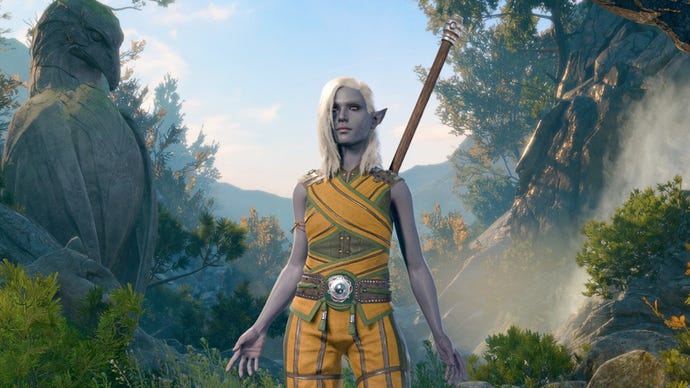
- Proficiencies: Simple Weapons, Shortswords
- Primary Ability: Dexterity
- Level 1 HP: 8 + Constitution Modifier
- Level 2+ HP: 5 + Constitution Modifier
- Subclasses: Way of the Open Hand, Way of Shadow, Way of the Four Elements
The Monk is D&D's martial arts master. Like the other martial Baldur's Gate 3 classes, Monks also get Extra Attack at level 5, but they're generally faster and more evasive. Unarmored Movement, for example, gives you increasingly more movement speed during combat as you level up, as long as you're unarmored. Monks also benefit from Unarmored Defense, which makes your Armor Class equal to 10 plus your Dexterity and Wisdom modifiers.
Monks get access to Ki Points, a mystic energy that you can spend to alter your strikes. This lets you use Flurry of Blows, for example, to make two unarmed strikes as a bonus action immediately after attacking. As you level up, you'll unlock more Ki abilities, such as Stunning Strike.
Be sure to head over to our Baldur's Gate 3 best Monk build guide if you want additional advice on channeling your Ki strikes and becoming an unarmed attack machine.
| Level | Class Features | Prof. Bonus |
Martial Arts dice | Ki Points | Unarmored Movement |
|---|---|---|---|---|---|
| 1 | Ki Points, Unarmored Defense, Martial Arts | +2 | 1d4 | 2 | 0 |
| 2 | Unarmored Movement | +2 | 1d4 | 2 | +10ft |
| 3 | Subclass choice, Deflect Missiles | +2 | 1d4 | 3 | +10ft |
| 4 | Ability Score Improvement or Feat, Slow Fall | +2 | 1d4 | 4 | +10ft |
| 5 | Extra Attack, Stunning Strike | +3 | 1d6 | 5 | +10ft |
| 6 | Subclass Feature, Ki-Empowered Strikes | +3 | 1d6 | 6 | +15ft |
| 7 | Evasion, Stillness of Mind | +3 | 1d6 | 7 | +15ft |
| 8 | Ability Score Improvement or Feat | +3 | 1d6 | 8 | +15ft |
| 9 | Improved Unarmored Movement | +4 | 1d6 | 9 | +15ft |
| 10 | Purity of Body | +4 | 1d6 | 10 | +20ft |
| 11 | Subclass Feature | +4 | 1d8 | 11 | +20ft |
| 12 | Ability Score Improvement or Feat | +4 | 1d8 | 12 | +20ft |
Paladin

- Proficiencies: Simple Weapons, Martial Weapons, Light Armour, Medium Armour, Heavy Armour, Shields
- Primary Ability: Strength
- Level 1 HP: 10 + Constitution Modifier
- Level 2+ HP: 6 + Constitution Modifier
- Subclasses: Oath of the Ancients, Oath of Devotion, Oath of Vengeance, Oathbreaker
The Paladin is typically a warrior sworn to an oath of righteousness and justice. They fight against the evils of the world, smiting those who do wrong and commit villainous acts. They can channel divine powers for casting spells, but Paladins are generally far more melee-focused. They're also one of the tankier classes in Baldur's Gate 3.
The Paladin's key feature is Divine Smite, which you can use to empower your melee strikes with additional radiant damage by expending spell slots. Like the Cleric, they also get access to various Channel Divinity powers, depending on their Oath. That is, of course, if they keep their Oath. Paladins who lose their way can become Oathbreakers, a darker hidden subclass that you might unlock while playing and cannot initially choose as a starting option.
For an in-depth rundown on how to become an Oathbreaker and all the other intricacies of this divine class, see our Baldur's Gate 3 best Paladin build guide.
| Level | Class Features | Prof. Bonus |
Slots |
|---|---|---|---|
| 1 | Divine Sense, Lay on Hands, Subclass choice | +2 | 0 | 0 | 0 | 0 | 0 | 0 |
| 2 | Divine Smite, Fighting Style, Spellcasting (Level 1 Spells) | +2 | 2 | 0 | 0 | 0 | 0 | 0 |
| 3 | Divine Health | +2 | 3 | 0 | 0 | 0 | 0 | 0 |
| 4 | Ability Score Improvement or Feat | +2 | 3 | 0 | 0 | 0 | 0 | 0 |
| 5 | Extra Attack, Level 2 Spells | +3 | 4 | 3 | 0 | 0 | 0 | 0 |
| 6 | Aura of Protection | +3 | 4 | 2 | 0 | 0 | 0 | 0 |
| 7 | Subclass Feature | +3 | 4 | 3 | 0 | 0 | 0 | 0 |
| 8 | Ability Score Improvement or Feat | +3 | 4 | 3 | 0 | 0 | 0 | 0 |
| 9 | Level 3 Spells | +4 | 4 | 3 | 2 | 0 | 0 | 0 |
| 10 | Aura of Courage | +4 | 4 | 3 | 2 | 0 | 0 | 0 |
| 11 | Improved Divine Smite | +4 | 4 | 3 | 3 | 0 | 0 | 0 |
| 12 | Ability Score Improvement or Feat | +4 | 4 | 3 | 3 | 0 | 0 | 0 |
Ranger

- Proficiencies: Simple Weapons, Martial Weapons, Light Armour, Medium Armour, Shields
- Primary Ability: Dexterity
- Level 1 HP: 10 + Constitution Modifier
- Level 2+ HP: 6 + Constitution Modifier
- Subclasses: Beast Master, Hunter, Gloom Stalker
The Ranger is a capable hunter, focused on stalking their prey before striking from afar. They're natural trackers, easily able to find foes and set themselves up to dominate during combat. While you might typically envisage a Ranger holding a bow, they also get access to a curated selection of nature-based spells that grant utility - such as Speak with Animals - or damage, such as Hail of Thorns.
The Ranger's playstyle is largely determined by their subclass. The Hunter becomes more of a lone warrior, gaining increased damage and defense to make them far stronger than they could be otherwise. The Gloom Stalker is more magic-focused, with access to additional spells and even the ability to manipulate fate by rerolling a missed strike.
The Beast Master is by far the most exciting, though, as it gives you an animal companion! This will act as another combatant for your party during combat, drawing enemy aggression and even gaining its own Extra Attack as well.
For more on dealing damage from afar or hunting the wilderness with a bear by your side, see our Baldur's Gate 3 best Ranger build guide.
| Level | Class Features | Prof. Bonus |
Spells | Slots |
|---|---|---|---|---|
| 1 | Favored Enemy, Natural Explorer | +2 | 0 | 0 | 0 | 0 | 0 | 0 | 0 |
| 2 | Fighting Style Passive, Spellcasting (Level 1 Spells) | +2 | 2 | 2 | 0 | 0 | 0 | 0 | 0 |
| 3 | Subclass choice | +2 | 3 | 3 | 0 | 0 | 0 | 0 | 0 |
| 4 | Ability Score Improvement or Feat | +2 | 3 | 3 | 0 | 0 | 0 | 0 | 0 |
| 5 | Extra Attack, Level 2 Spells | +3 | 4 | 4 | 2 | 0 | 0 | 0 | 0 |
| 6 | Improved Favored Enemy and Improved Natural Explorer | +3 | 4 | 4 | 2 | 0 | 0 | 0 | 0 |
| 7 | Subclass Feature | +3 | 5 | 4 | 3 | 0 | 0 | 0 | 0 |
| 8 | Ability Score Improvement or Feat, Land's Slide | +3 | 5 | 4 | 3 | 0 | 0 | 0 | 0 |
| 9 | Level 3 Spells | +4 | 6 | 4 | 3 | 2 | 0 | 0 | 0 |
| 10 | Improved Natural Explorer, Hide in Plain Sight | +4 | 6 | 4 | 3 | 2 | 0 | 0 | 0 |
| 11 | Subclass Feature | +4 | 7 | 4 | 3 | 3 | 0 | 0 | 0 |
| 12 | Ability Score Improvement or Feat | +4 | 7 | 4 | 3 | 3 | 0 | 0 | 0 |
Rogue

- Proficiencies: Simple Weapons, Hand Crossbows, Longswords, Rapiers, Shortswords, Light Armour
- Primary Ability: Dexterity
- Level 1 HP: 8 + Constitution Modifier
- Level 2+ HP: 5 + Constitution Modifier
- Subclasses: Thief, Arcane Trickster, Assassin
The Rogue sneaks in and strikes from the shadows, lurking in murky darkness while waiting for their moment. They're one of the more fragile Baldur's Gate 3 classes, with lighter armor to allow for better Stealth, and they're also one of few martial classes that don't get extra attack. They do, however, get a bunch of skill check bonuses thanks to Expertise, and can also Dash or Disengage as a bonus action.
If you're looking for an extra magical flair, the Arcane Trickster Rogue gets access to a range of spells that you can use to deal damage or control the battlefield. The Thief subclass is even better at hiding, with advantage on Stealth checks during combat. The Assassin subclass is perfect for Surprise rounds at the start of combat, granting advantage on attack rolls against enemies who haven't yet taken their turn and also guaranteeing a critical strike on any surprised enemies.
The best boon in any Rogue's repertoire, though, is Sneak Attack. If you have advantage on an attack roll, or an ally is within 1.5ft of the target, then you can add Sneak Attack dice to your damage roll for an attack. This can be done every turn, so you don't need to wait for a short or long rest between uses, and the damage bonus can rise up to an additional 6d6 at level 12.
Backstabbing and slinking around enemies never gets old, and these are just a fraction of the Rogue's useful abilities. Our Baldur's Gate 3 best Rogue build guide has more intel.
| Level | Class Features | Prof. Bonus |
Sneak Attack dice |
|---|---|---|---|
| 1 | Expertise, Sneak Attack | +2 | 1d6 |
| 2 | Cunning Action | +2 | 1d6 |
| 3 | Subclass choice | +2 | 2d6 |
| 4 | Ability Score Improvement or Feat | +2 | 2d6 |
| 5 | Uncanny Dodge | +3 | 3d6 |
| 6 | Expertise | +3 | 3d6 |
| 7 | Evasion | +3 | 4d6 |
| 8 | Ability Score Improvement or Feat | +3 | 4d6 |
| 9 | Subclass Feature | +4 | 5d6 |
| 10 | Ability Score Improvement or Feat | +4 | 5d6 |
| 11 | Reliable Talent | +4 | 6d6 |
| 12 | Ability Score Improvement or Feat | +4 | 6d6 |
Sorcerer

- Proficiencies: Daggers, Quarterstaffs, Light Crossbows
- Primary Ability: Charisma
- Level 1 HP: 6 + Constitution Modifier
- Level 2+ HP: 4 + Constitution Modifier
- Subclasses: Draconic Bloodline, Wild Magic, Storm Sorcery
The Sorcerer is adept with magic thanks to a bloodline nherited from an arcane ancestry. They have far fewer spells than the Wizard, but they can use those spells to deal far more damage. With the Draconic Ancestry subclass, they can further specialise in a specific damage type, while the Wild Magic subclass offers the potential to add some unexpected shenanigans into an encounter whenever you cast a spell of 1st level or higher.
All Sorcerers get access to Sorcery Points, a unique class resource that you can spend to get more spell slots or power up spells that you're about to cast. You can do this with various Metamagic options, which can upgrade spells to hit multiple targets, double the duration of inflicted effects, increase the range within which you can cast them, and more.
Feeling like a sorcerous bloodline might be your ideal way to dive into the realm of magic? Be sure to read our Baldur's Gate 3 best Sorcerer build guide for a more in-depth breakdown of this class.
| Level | Class Features | Prof. Bonus |
Sorcery Points | Cantrips | Spells | Slots |
|---|---|---|---|---|---|---|
| 1 | Subclass choice, Spellcasting (Cantrips and Level 1 Spells) | +2 | 0 | 4 | 2 | 2 | 0 | 0 | 0 | 0 | 0 |
| 2 | Create Sorcery Points/Spell Slots, Metamagic (pick 2) | +2 | 2 | 4 | 3 | 3 | 0 | 0 | 0 | 0 | 0 |
| 3 | Metamagic (pick 1), Level 2 Spells | +2 | 3 | 4 | 4 | 4 | 2 | 0 | 0 | 0 | 0 |
| 4 | Ability Score Improvement or Feat | +2 | 4 | 5 | 5 | 4 | 3 | 0 | 0 | 0 | 0 |
| 5 | Level 3 Spells | +3 | 5 | 5 | 6 | 4 | 3 | 2 | 0 | 0 | 0 |
| 6 | Subclass Feature | +3 | 6 | 5 | 7 | 4 | 3 | 3 | 0 | 0 | 0 |
| 7 | Level 4 Spells | +3 | 7 | 5 | 8 | 4 | 3 | 3 | 1 | 0 | 0 |
| 8 | Ability Score Improvement or Feat | +3 | 8 | 5 | 9 | 4 | 3 | 3 | 2 | 0 | 0 |
| 9 | Level 5 Spells | +4 | 9 | 5 | 10 | 4 | 3 | 3 | 3 | 1 | 0 |
| 10 | Metamagic (pick 1) | +4 | 10 | 6 | 11 | 4 | 3 | 3 | 3 | 2 | 0 |
| 11 | Level 6 Spells | +4 | 11 | 6 | 12 | 4 | 3 | 3 | 3 | 2 | 1 |
| 12 | Ability Score Improvement or Feat | +4 | 12 | 6 | 12 | 4 | 3 | 3 | 3 | 2 | 1 |
Warlock
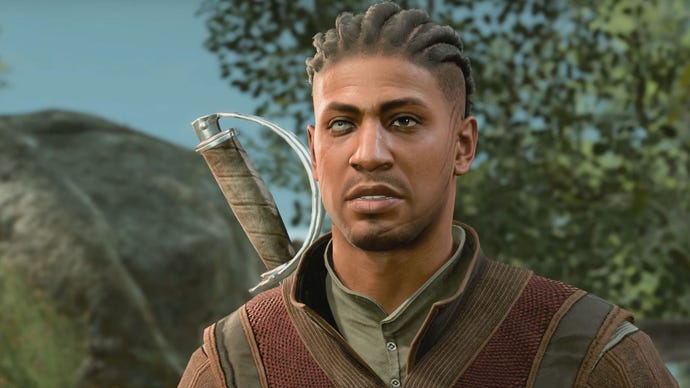
- Proficiencies: Simple Weapons, Light Armour
- Primary Ability: Charisma
- Level 1 HP: 8 + Constitution Modifier
- Level 2+ HP: 5 + Constitution Modifier
- Subclasses: The Fiend, The Great Old One, Archfey
Rather than receiving magical gifts from a bloodline or needing to study spellbooks, the Warlock is granted arcane talents by a Patron, a mysterious entity with which they form a pact of service. The Warlock is beholden to this pact for their spells, and their chosen Patron also acts as their subclass.
The go-to spell for any Warlock is Eldritch Blast, a cantrip that upgrades as you level up. Make sure to take it straight away, as it will be your most reliable damage dealer throughout your adventure. Eldritch Blast deals 1d10 damage, but it fires two rays at level 5, and three rays once you reach level 11.
You can also take Eldritch Invocations as you level up, many of which will improve Eldritch Blast further. Agonizing Blast, for example, adds your Charisma modifier to Eldritch Blast's damage, while Repelling Blast lets you push enemies back by 10ft if Eldritch Blast hits.
If you're keen on delving deeper into the world of dark patrons, our Baldur's Gate 3 best Warlock build guide has more information.
| Level | Class Features | Prof. Bonus |
Invocations Known | Cantrips | Spells | Spell Slots | Slot Level |
|---|---|---|---|---|---|---|---|
| 1 | Subclass choice, Spellcasting (Level 1 Spells) | +2 | 0 | 2 | 2 | 1 | 1st |
| 2 | Eldritch Invocations (pick 2) | +2 | 2 | 2 | 3 | 2 | 1st |
| 3 | Pact Boon, Level 2 Spells | +2 | 2 | 2 | 4 | 2 | 2nd |
| 4 | Ability Score Improvement or Feat | +2 | 2 | 3 | 5 | 2 | 2nd |
| 5 | Level 3 Spells, Eldritch Invocations (pick 1) | +3 | 3 | 3 | 6 | 2 | 3rd |
| 6 | Subclass Feature | +3 | 3 | 3 | 7 | 2 | 3rd |
| 7 | Level 4 Spells, Eldritch Invocations (pick 1) | +3 | 4 | 3 | 8 | 2 | 4th |
| 8 | Ability Score Improvement or Feat | +3 | 4 | 3 | 9 | 2 | 4th |
| 9 | Level 5 Spells, Eldritch Invocations (pick 1) | +4 | 5 | 3 | 10 | 2 | 5th |
| 10 | Subclass Feature | +4 | 5 | 4 | 10 | 2 | 5th |
| 11 | Mystic Arcanum | +4 | 5 | 4 | 11 | 3 | 5th |
| 12 | Ability Score Improvement or Feat, Eldritch Invocations (pick 1) | +4 | 6 | 4 | 11 | 3 | 5th |
Wizard
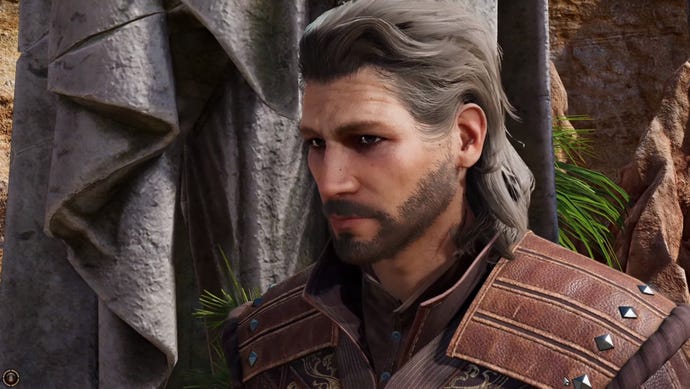
- Proficiencies: Daggers, Quarterstaffs, Light Crossbows
- Primary Ability: Intelligence
- Level 1 HP: 6 + Constitution Modifier
- Level 2+ HP: 4 + Constitution Modifier
- Subclasses: Abjuration, Evocation, Conjuration, Divination, Enchantment, Illusion, Necromancy, Transmutation
The Wizard is an arcane scholar, burying their nose in books and scrolls. They have the biggest spell list by far, giving them access to a huge variety of magic for any scenario. Need damage? An old, trusty Fireball will clean up a pack of enemies with ease. Need to get some control in a tough fight? Haste, Slow, Fear, and Confusion grant access to a wide range of status effects that can either buff your allies or disrupt your enemies.
At level 2, you get to choose a School of magic in which to specialise as your subclass. Your chosen subclass will grant benefits to spells of that School. Choosing School of Evocation, for example, buffs your destructive capabilities by granting you Sculpt Spells, which you can use to prevent allies from taking damage when you cast area of effect spells such as Fireball. There are eight Schools to choose from, which also makes the Wizard an incredibly versatile class.
If you end up wanting to focus on a different School of Magic than the one you initially picked, don't forget that you can speak with Withers - an NPC that you may meet during Act 1 - to respec your character at any time.
For more on bookish wizards and the many, many spells they have at their disposal, see our Baldur's Gate 3 best Wizard build guide.
| Level | Class Features | Prof. Bonus |
Cantrips | Slots |
|---|---|---|---|---|
| 1 | Arcane Recovery, Spellcasting (Cantrips and Level 1 Spells) | +2 | 3 | 2 | 0 | 0 | 0 | 0 | 0 |
| 2 | Subclass choice | +2 | 3 | 3 | 0 | 0 | 0 | 0 | 0 |
| 3 | Level 2 Spells | +2 | 3 | 4 | 2 | 0 | 0 | 0 | 0 |
| 4 | Ability Score Improvement or Feat | +2 | 4 | 4 | 3 | 0 | 0 | 0 | 0 |
| 5 | Level 3 Spells | +3 | 4 | 4 | 3 | 2 | 0 | 0 | 0 |
| 6 | Subclass Feature | +3 | 4 | 4 | 3 | 3 | 0 | 0 | 0 |
| 7 | Level 4 Spells | +3 | 4 | 4 | 3 | 3 | 1 | 0 | 0 |
| 8 | Ability Score Improvement or Feat | +3 | 4 | 4 | 3 | 3 | 2 | 0 | 0 |
| 9 | Level 5 Spells | +4 | 4 | 4 | 3 | 3 | 3 | 1 | 0 |
| 10 | Subclass Feature | +4 | 5 | 4 | 3 | 3 | 3 | 2 | 0 |
| 11 | Level 6 Spells | +4 | 5 | 4 | 3 | 3 | 3 | 2 | 1 |
| 12 | Ability Score Improvement or Feat | +4 | 5 | 4 | 3 | 3 | 3 | 2 | 1 |
That wraps up our guide on all Baldur's Gate 3 classes. We've also got a guide to the best builds for every class if you desire more knowledge. Meanwhile, if you've settled on a party and want to know how to romance your companions, check out our Baldur's Gate 3 romance guide.
Disclosure: Former RPS deputy editor Adam Smith (RPS in peace) now works at Larian and is the lead writer for Baldur's Gate 3. Former contributor Emily Gera also works on it.
